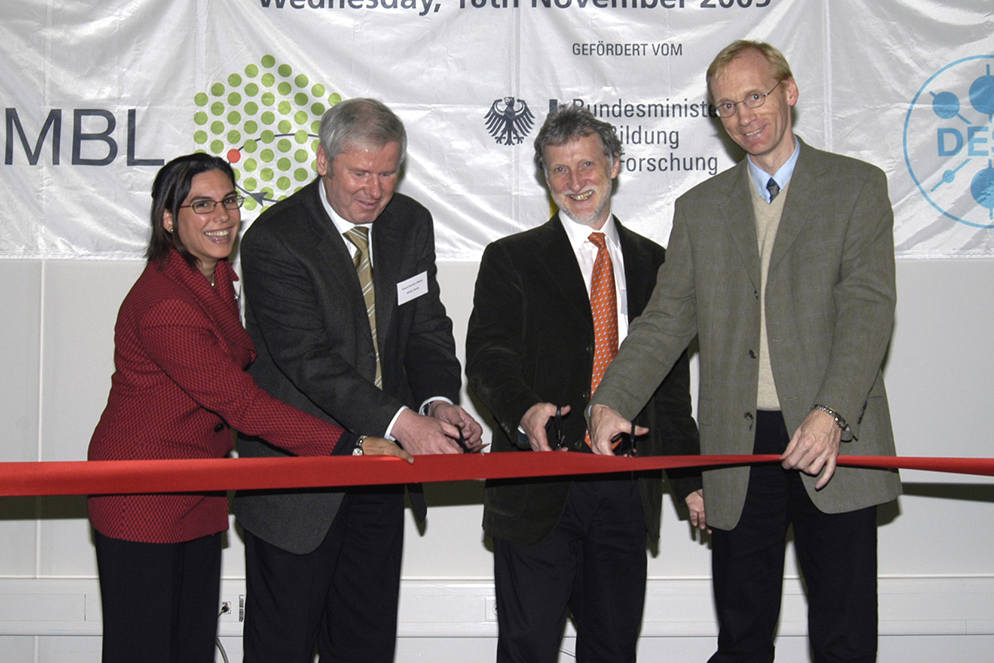Flashback Friday: A cause for celebration

EMBL celebrates its 50th anniversary in 2024, and in so doing, we’re digging through the archives for some fascinating stories from EMBL’s past publications to publish in this blog. The following is an EMBLetc. article from Issue 30 in December 2005.
By Jochen Müller-Dieckmann (EMBL Hamburg Group Leader, 2004-1012)
On 16 November the Hamburg Outstation took a major leap with the services it provides with the opening of Europe’s largest high-throughput crystallisation facility.
The resource was officially opened on the DESY/EMBL Hamburg site in the presence of Jürgen Roemer-Mähler of the German Federal Ministry of Education and Research (BMBF), Josefina Enfedaque of the European Commission and Roland Salchow, representative of the city council of Freie und Hansestadt Hamburg.
Iain Mattaj delivered a speech emphasising the importance of modern high-throughput technologies together with continued improvements in synchrotron resources for the future challenges in the life sciences. High-throughput facilities are a critical area of EMBL’s expanded plan for systems biology in the draft Programme.
The official ceremony was followed by a one-day workshop on macromolecular crystallisation on 17 November. More than 60 participants from 16 nations attended the event, which consisted of demonstrations of the latest methods and techniques and lectures from world-leading crystallographers from Europe and the US, including EMBL Hamburg’s Manfred Weiss and José Márquez from EMBL Grenoble.
Participants were also offered the chance to bring along protein samples from their own laboratories to experience the services offered by the facility for themselves. Many took advantage of this opportunity, and following the event the high-throughput crystallisation facility team was busy setting up 32 samples.
The automation of each step in the process is just one of the facility’s innovations. The workshop proved that the resource is capable of setting up 100 plates (10,000 experiments) per day, and it has the capacity to store and image 10,000 crystallisation plates. In addition, users will be able to monitor the progress of their crystals from their own computers.
From 2006, the high-throughput facility will become accessible to the general user community.
EMBL’s Sample Preparation and Characterisation Facility today continues to significantly impact structural biology research. More stories about the SPC can be found here.
Related Links
Biophysics analysis made easy with an online tool
SPC Facility in Hamburg supports a new pan-European consortium
EMBL SPC facility supports COVID-19 projects
Archive materials: Hamburg ‘Outstation’; EMBL Hamburg and DESY documents; Campus photos – EMBL Hamburg/DESY; Collaboration agreement between EMBL Hamburg and DESY; Laboratory Project CEBM documents